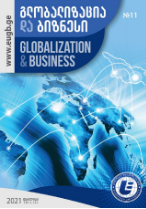SOME ASPECTS OF MACROECONOMIC STABILITY AND TRANSFORMATION (EXAMPLE OF POLAND AND GEORGIA)
DOI:
https://doi.org/10.35945/gb.2021.11.004Keywords:
Transitional Economies, Macroeconomic Stabilization, Macroeconomic Policy, Economic Development, Comparative Studies Of Countries, EDIAbstract
The most distinctive shifts in the economic system began at the end of the last century, in the form of economic formation transformation, one of the most important political and economic processes. This process affected a certain group of countries, which had to transform into the market economy. Thus, there was an inevitable necessity to adjust the macroeconomic policy and regulation. This paper aims to describe and analyze the difficulties, problems and challenges that occurred during the last years. We will try to focus on issues of macroeconomic stability and the role of a government in the sustainable development of the countries, for example Poland and Georgia. The paper highlights the importance of stability of the economy for Poland and Georgia. The paper describes the current economic situation and its short-term perspectives by using the Economic Discomfort Index and uses the Rule of Law Index to identify the degree of realization of the state functions to develop the legislative base, improve the competitive environment, etc. The aspects of macroeconomic stability and transformation are considered on the example of the economics of Poland and Georgia, with the former one being and the latter making efforts to become the EU member.
Downloads
Downloads
Published
Issue
Section
License
Copyright (c) 2021 Globalization and Business

This work is licensed under a Creative Commons Attribution-NonCommercial-ShareAlike 4.0 International License.









